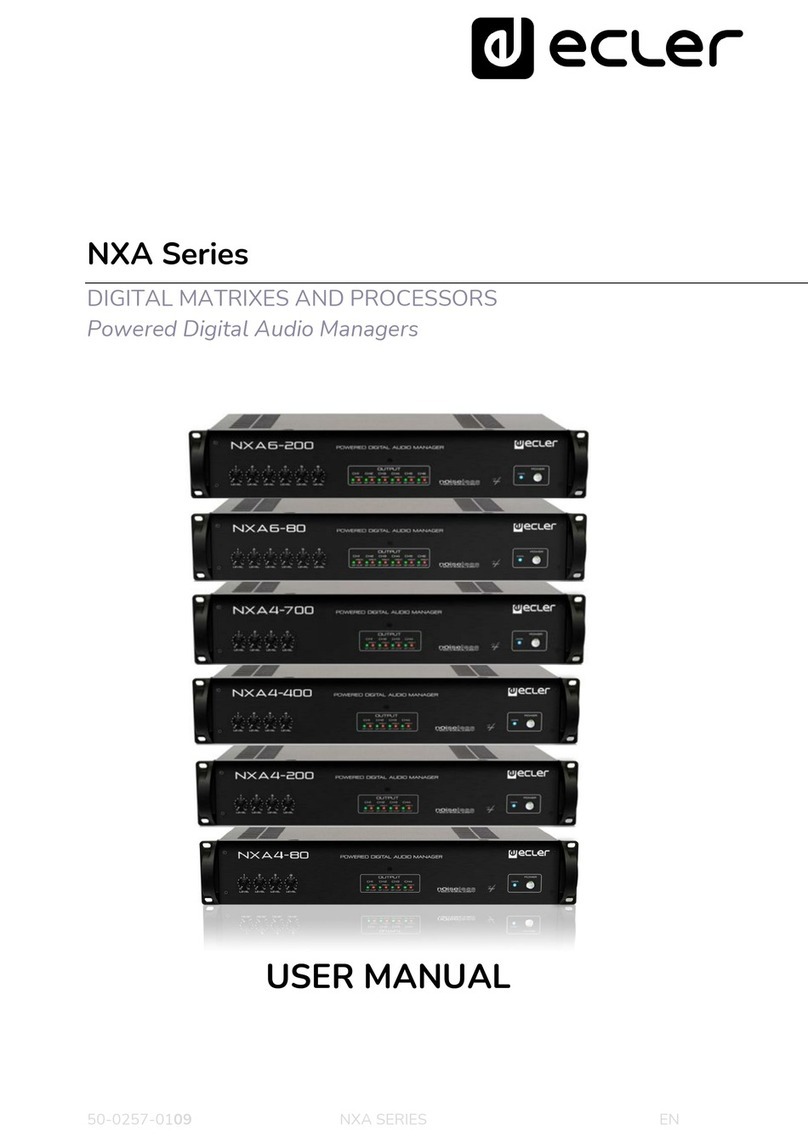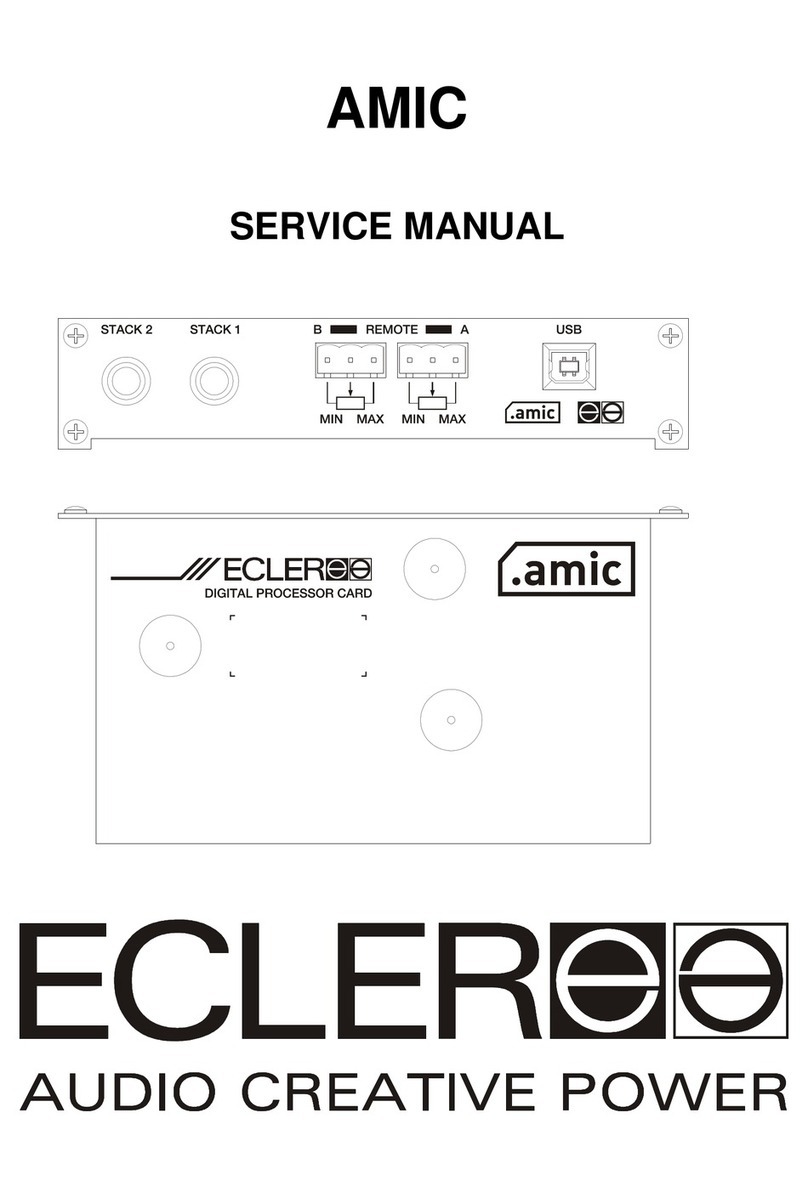4
1. IMPORTANT REMARK
Thank you for your confidence and for choosing our MIMO88SG matrix. It is VERY IMPORTANT to
carefully read this manual, to fully understand its contents before any connection in order to maximize your use and
get the best performance from this equipment.
In order to guarantee the optimum operation of this unit, we strongly recommend that its maintenance be
carried out by our Authorized Technical Services.
The MIMO88SG come with a 3-year warranty.
1.1. Safety Precautions
This apparatus must be earthed through its mains cable.
Do not expose the unit to rain or water splashes, and do not place liquid containers or
incandescent objects like candles on top of the unit.
Should any connection / disconnection task be done, always disconnect the unit from the mains supply.
There are no user serviceable parts inside the unit.
2. INTRODUCTION
The MIMO88SG is a fully programmable digital audio matrix, with the following features:
8 balanced MIC/LINE inputs (independent phantom power per input channel).
8 balanced LINE outputs.
8 GPI control ports (General Purpose Input).
Programming and remote management via Ethernet using EclerNet Manager (or point to point,
with a direct CAT5 cable, or from an Ethernet network).
Remote control via UCP (User Control Panel) clients on Ethernet: simultaneous clients with
customized control panel, such as WPmSCREEN Ecler, Android®, iOS®, Windows®, etc.
Remote control from third party external devices. (Crestron, AMX, Vity, Medialon, etc. Registered
trademarks of their manufacturers). TP-NET protocol, via Ethernet or RS-232 ports.
Remote control bus for WPTOUCH digital panels and MPAGE16 messaging consoles (paging).
Configuration memory (presets) management.
Scheduled events based on calendar.
Extensive DSP available:
oRouting matrix/mixer, from any input to any output with adjustable level for crossover
points (independent mixes of different inputs for each output).
oMono or stereo channel processing.
oLevel control, mute, vu-meters and phase adjustment for inputs and outputs.
oInternal signal generator (sine wave, pink noise, white noise, polarity test).
oParametric EQ on inputs and outputs.
oDelay on inputs and outputs.
oGate/compressor on input channels.
oCompressor/limiter on outputs.
oInput channel priority assignment (ducking).
oVirtual and physical messaging consoles (paging).
oStandard MIMO88SG firmware version (for generic use) and alternative version, for
conferencing applications (MIMO88SG CONFERENCE version). Both firmware versions
are compatible with the MIMO88SG hardware which can be freely updated with anyone of
them.
The MIMO88SG programming is done with EclerNet Manager*. Please refer to the EclerNet Manager
software manual for more information.
* EclerNet Manager software is available on www.ecler.com.






























